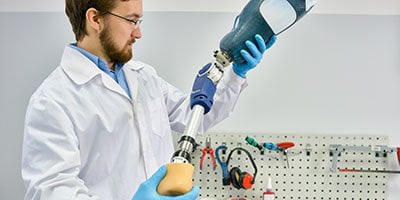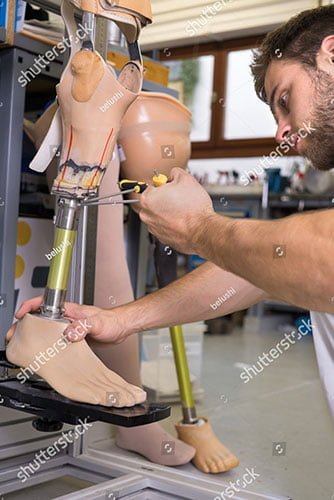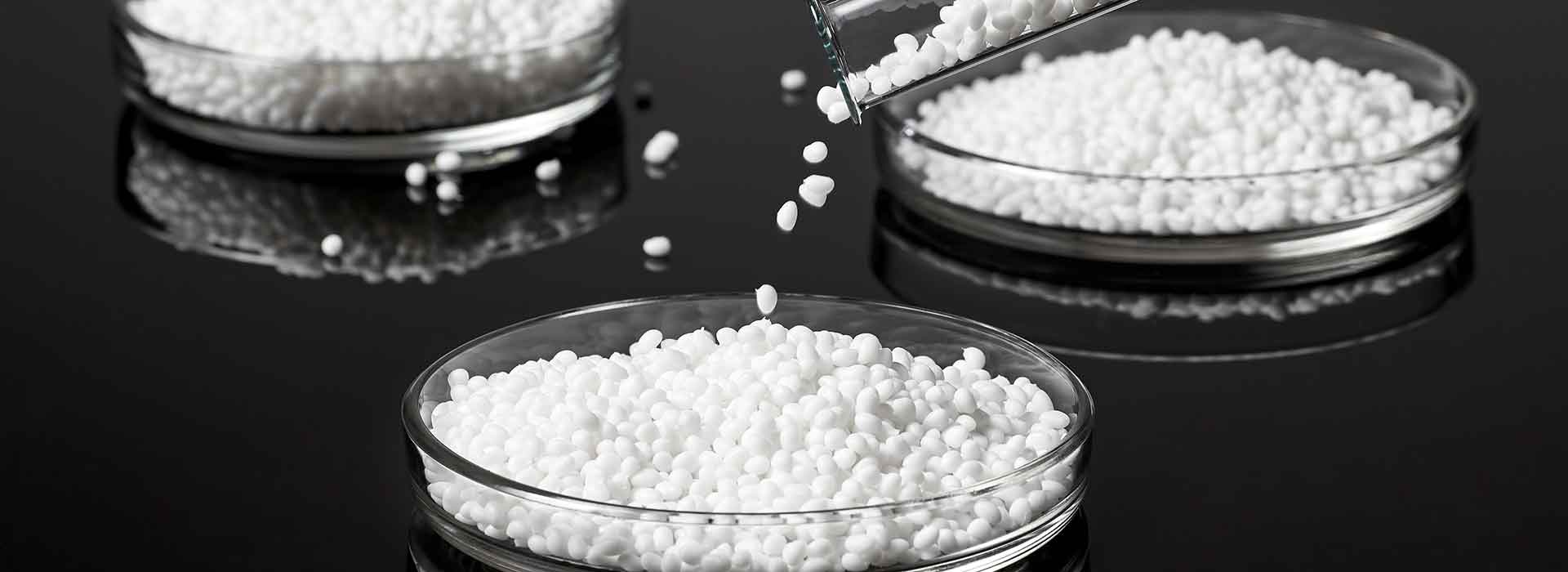PEEK and Torlon in prosthetics
 PEEK and Torlon are critical prosthesis materials and have helped improve the quality of prosthetics. Modern prosthetics are far more sophisticated, durable and comfortable than previous iterations, and much of this improvement can be attributed to better materials. Greater use of high-performance polymers has resulted in a prosthetic that is lighter and much stronger, ensuring a more comfortable fit and better prosthetic longevity. Both of those are primary concerns for patients, as a single prosthesis can be a major investment.
PEEK and Torlon are critical prosthesis materials and have helped improve the quality of prosthetics. Modern prosthetics are far more sophisticated, durable and comfortable than previous iterations, and much of this improvement can be attributed to better materials. Greater use of high-performance polymers has resulted in a prosthetic that is lighter and much stronger, ensuring a more comfortable fit and better prosthetic longevity. Both of those are primary concerns for patients, as a single prosthesis can be a major investment.
PEEK is known for its use in the body, usually in the form of spinal, orthopedic or trauma fixation devices. It can be adapted for use in prosthetics, as well. Torlon is a natural fit for prosthetics, and is a popular material option for spacers, seals and bushings.
Why PEEK and Torlon make sense for prosthetics
Prosthetics are some of the most challenging medical devices to produce. Replacing any part of the body with artificial materials is going to come with plenty of obstacles. The prosthesis must be comfortable to wear and use. It must be light enough for the patient to retain mobility. It must be tough enough, especially if it is a lower body prosthesis, to handle the rigors of constant use. It must be strong enough to bear weight and it must be flexible enough to allow for full range of movement.
That’s a lot of boxes to tick for a prosthesis, and Torlon and PEEK can help a prosthesis manufacturer get there. Here’s what both polymers bring to prosthetics:
1. Superior strength and stiffness – One of the defining traits of a high-performance polymer is its excellent modulus. This is also true of PEEK and especially Torlon. Torlon is particularly strong and stiff, making it an ideal material for bearing weight.
Torlon is an ideal material for any lower body prosthetics, like hip, knee or foot replacement. Since lower body prosthetics are responsible for bearing so much weight, they are designed to be as strong as possible, and Torlon components make that mission much easier to accomplish. Further, Torlon and PEEK components are usually the ones responsible for much of the weight bearing. Though you can’t see them in action in a typical prosthesis, they are doing much of the tough work in keeping the patient upright and stable.
2. Excellent wear resistance – Torlon and PEEK also exhibit strong wear resistance, which is another essential trait in a prosthesis. This is, again, particularly true of lower body prosthetics, especially if the entire leg has been replaced. The upper portion of the prosthesis constantly interfaces with the lower portion of the prosthesis, resulting in repeated wear. Without considerable wear resistance, the prosthesis may fail prematurely.
Fortunately, PEEK and Torlon can be modified to further enhance their ability to resist wear. A defining feature of PEEK and Torlon is their compatibility with various additives. Many of these applications are reserved for implantable PEEK applications, but the addition of Carbon Fibers and other additives can greatly improve wear resistance in prosthesis components.
As PEEK and Torlon components are often directly subjected to wear, this added wear resistance is a critical trait.
3. Tight production tolerances – PEEK and Torlon components can be fabricated to impressively tight tolerances, ensuring consistency from one component to the next. The fabrication processes behind Torlon and PEEK components have been developed over many years, and they are perfected at this point. As such, Torlon and PEEK fabricators can consistently produce components that meet all the needs of prosthesis manufacturers.
4. Long-term viability – Torlon and PEEK are durable polymers and are relied on in some of the most demanding industrial applications in the world. This degree of durability is also important to patients, who trust that their prosthesis will last for years. The addition of high-performance polymers enhances the overall durability of the prosthesis, ensuring it functions optimally for longer.
5. Comfort – Torlon and PEEK weigh much less than metal, and this weight reduction is a prized trait of high-performance polymers. Although the use of PEEK or Torlon components can’t always greatly reduce the prosthesis’ overall weight, it can offer some benefits here, and potentially improve patient comfort as a result.
What prosthetics can Torlon and PEEK improve?
PEEK and Torlon can be effective in a large variety of prosthetics, including both upper and lower body prosthetics. However, Torlon and PEEK’s superior physical properties mean that the polymers are particularly effective in lower body prosthetics. This includes everything from foot replacement to total leg replacement.
As researchers and engineers constantly discover better ways to restore limb function, comfort and control, PEEK and Torlon will play a role in driving these changes, giving engineers a worthy alternative to metal components.
Myoelectric prosthetics, for example, are at the leading edge of what a prosthesis can do, and they are in their earliest development stages. A myoelectric prosthesis reads the electrical impulses delivered from the brain to the muscle as information. The prosthesis responds to this information by contracting or articulating, restoring some degree of natural function to the patient. It will be some time before myoelectric prosthetics are reliable and cost-effective enough to be widely adopted, but PEEK and Torlon will likely be incorporated into these sophisticated limb replacements. Myoelectric prosthetics are built with a motor and battery, both of which increase weight. The use of polymers like Torlon and PEEK can help offset these heavier components and improve their performance. This is just one example of what both polymers could offer engineers in the future.
The use of PEEK and Torlon is expanding in the prosthetics field. They do a lot of the heavy lifting, and they do it reliably. With superior strength, wear resistance and engineering tolerances, PEEK and Torlon have proven their worth as frontline material options.


